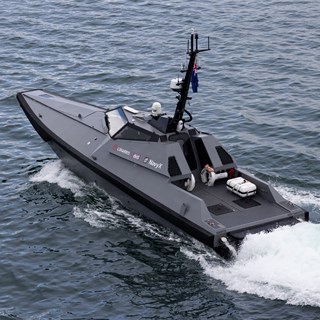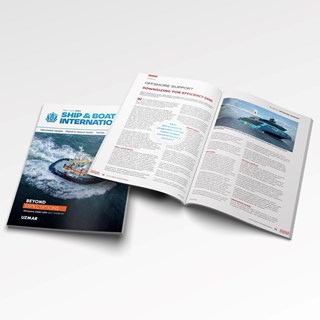
When scrap catches fire, expertise at sea makes the difference
Rising scrap metal fires at sea demand investigators with expertise in both fire behaviour and the marine environment.
3 November 2025
Scrap metal is one of the most deceptively volatile cargoes in modern shipping. Once regarded as low-risk and low-value, the rise of lithium-ion and other types of rechargeable batteries hidden within scrap consignments has turned it into one of the most challenging cargo types for marine insurers, P&I Clubs, vessel owners and crews, and terminals alike.
In recent years, our teams have been called to investigate an increasing number of fires on board vessels carrying scrap metal cargoes, from the ARA region (Amsterdam-Rotterdam-Antwerp) to Turkey and beyond. While every case is unique, the patterns emerging across the industry reveal why these fires are so destructive, so complex to resolve, and so important to understand.
The most common ignition source in scrap cargoes today is most likely the lithium-ion battery, a small, high-energy device capable of triggering thermal runaway when damaged, crushed or short-circuited. The process is self-perpetuating: heat creates more heat, often igniting nearby combustible foreign materials such as plastics, rubber or residual oils mixed in with the metal.
Yet batteries are not the only culprit. Oxidising materials such as turnings and shavings can also generate significant heat through rusting or exothermic reactions, particularly when moisture is present. The result can easily be mistaken for harmless steam in the early stages, until it is too late.
One of the striking features of these incidents is that many fires begin while the vessel is still alongside. During the final stages of the loading operations, bulldozers are often lowered into the holds to compact the scrap and trim it underneath the hatch coamings. The crushing and shifting of metal during this process can damage hidden batteries deep in the cargo, creating ignition hotspots that can spread rapidly.
Terminals are well aware of the risk. Some employ visual inspection procedures and impose fines when these types of batteries are found in the consignments of scrap delivered at the terminals in trucks. Others use infrared monitoring to detect temperature spikes during loading. Yet even with such vigilance, no inspection regime can guarantee battery-free scrap. The sheer scale and variability of cargoes make it virtually impossible to identify every hazard before loading.
While scrap fires often ‘destroy’ some of the cargo, the major losses are typically structural, affecting the vessel itself and the surrounding environment. In one recent case, tank-top and hull plating of 25 millimetres thick melted completely through, opening a connection between the cargo hold and the port basin. In others, the intense heat has warped hull structures so severely that several dozens of tonnes of steel had to be cropped and replaced.
The extinguishing process adds another layer of complexity. Flooding holds can compromise vessel stability and produce vast volumes of contaminated water containing PFAS and other pollutants. Disposal costs can exceed one to two million dollars per incident, particularly where terminals lack adequate filtration systems.
The uncomfortable truth is that with current legislation and inspection practices, scrap cargo fires cannot be completely prevented. The global scrap trade continues to grow, battery use continues to expand, and the controls to keep the two apart are still evolving.
This is why expertise matters, not just in fire investigation but in understanding the marine environment in which these fires occur. A fire on board a vessel is fundamentally different from one in a warehouse or factory. The ship itself becomes part of the event: steel structures deform, tank tops melt, and firefighting actions can affect stability, integrity and pollution control.
Investigators who understand vessel operations, vessel layout and design and cargo behaviour can interpret the evidence in context, distinguishing between rust-induced heating, condensation and true combustion. They can advise on safe firefighting strategies, oxygen reduction techniques such as nitrogen inertion, and practical pathways for the safe disposal of contaminated water.
Without this maritime insight, investigations risk misinterpretation, delay or poor decision-making, all of which can significantly escalate both costs and liabilities.
The risk profile of scrap metal cargoes has changed. What was once considered a benign bulk trade now carries a real potential for catastrophic fire loss. Charter party and Insurance clauses that prohibit ‘foreign matter’ in cargoes are easily undermined by the reality of how scrap is collected, processed and shipped.
Owners and Charterers should be aware that even a single battery pack can ignite an entire hold, and that once loaded, options for mitigation are limited. Terminals, meanwhile, play a pivotal role in reducing risk through inspection, segregation and proactive monitoring during loading.
When a scrap cargo fire occurs, speed, accuracy and contextual understanding are critical. Engaging specialists who combine fire investigation expertise with practical seafaring and vessel knowledge can make the difference between containment and catastrophe.
Marine fire investigators not only determine ignition sources and fire dynamics, they understand the operational realities of a vessel: how ventilation systems, ballast arrangements or hatch configurations can influence the spread of heat and gases.
This combination of technical and maritime expertise enables swift, informed decisions, saving time, limiting damage and supporting credible recovery and insurance outcomes.
Until regulation catches up, with stricter controls on the disposal and transport of lithium batteries, the maritime industry must focus on awareness, readiness and informed response. Fires will continue to occur; the difference lies in how they are managed.
Scrap metal fires are not going away. But with the right expertise, investigators and consultants who understand both ships and fire, the marine community can respond faster, more effectively and with greater confidence in protecting assets, people and the environment.
Written by Paddy Rynders – Marine Director at BMT, specialists in fire and incident investigations.

Paddy M. Rynders, a Marine Director and Senior Marine Consultant at BMT, boasts over 40 years of expertise in the maritime industry, including significant seafaring experience up to Chief Officer on various vessels. Since becoming a marine cargo surveyor in 1999 and joining BMT in 2006, he has expertly handled a myriad of P&I matters and cargo-related claims, earning a reputation as a proficient fire investigator. Paddy's notable cases include high-profile investigations into the EVER GIVEN and ONE APUS incidents. Fluent in several languages and a member of esteemed organisations such as the Dutch Association of Registered Surveyors and the International Association of Arson Investigators, Paddy leverages his comprehensive skills and Bachelor’s degree in Nautical Studies from the Maritime Institute “De Ruyter” to make substantial contributions to the maritime sector.

Will Alexander
Get ready to dive deep into maritime autonomy as we bring you technical experts, insightful opinions, and unmissable discussions.

Dr Thomas Beard - UK / Europe
Episode 3 of IMarEST’s Ship Energy & Environment podcast series, addressed the ‘Realities and Challenges of Alternative Marine Fuels. Dr Thomas Beard, Clean Shipping Lead explores the practical side of the 'big four' alternative fuels.

N/A
As maritime autonomous systems continue to develop at pace, robust regulations and safety assurance measures are required to ensure safety at sea.

Noel Tomlinson - Maritime Design
Noel Tomlinson shares with SBI valuable insights on how BMT's innovative solution can help vessel operators overcome challenges and ensure a sustainable future for offshore wind operations.